Hover over images for detail:
 July view of Autumn Olive shrubs
July view of Autumn Olive shrubs
 November view of Autumn Olive shrubs
November view of Autumn Olive shrubs
When not controlled, Autumn Olive shrubs will out compete all other vegetation, quickly turning acres into a monoculture.
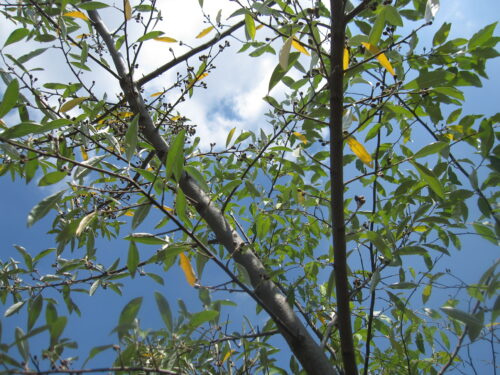 Autumn Olive drupe-like fruit in summer
Autumn Olive drupe-like fruit in summer
Autumn olive shrubs grow up to 20 feet high with several branched stems that emerge from the ground. The shrubs bloom in late spring with small trumpet-shaped, white or cream-colored flowers, replaced by drupe-like fruits, which mature to red berries in early fall.
 Autumn Olive shrub bearing red berries in early fall
Autumn Olive shrub bearing red berries in early fall
The red berries attract birds as they migrate in the fall. While high in sugar the berries are low in fat, which birds need for the winter flight. Instead, native shrubs such as Winterberry Holly, provide food high in fat for migrants in the late fall with persistent fruit. Plus, Winterberry Holly shrubs maintain their green leaves year round.
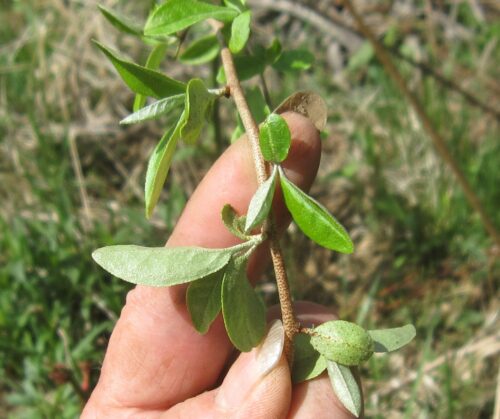 Leaf’s silver underside
Leaf’s silver underside
The most reliable method to identify this species is to turn over a leaf. The underside of the autumn olive leaf appears as if sprayed with metallic silver.
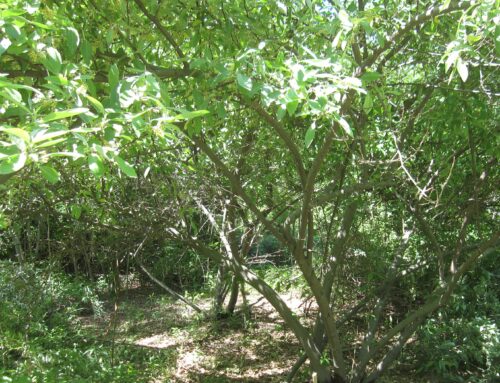 A plant’s multi-stems emerge from the ground
A plant’s multi-stems emerge from the ground
Do not attempt to uproot this shrub. Simply remove all the secondary branches from the main stem. Then debark the stem one or two feet from the ground. Scrape off the skin of seedlings or very small plants, using a potato peeler for these roots to die as well.
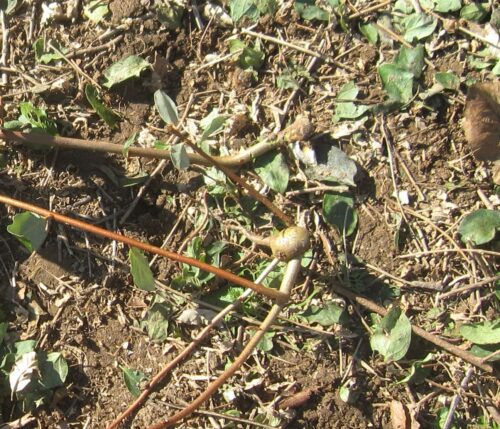 Sucker buds from lateral roots
Sucker buds from lateral roots
Cutting without debarking or attempting to dig up the root stimulates suckers to grow along the lateral roots.
 Lateral autumn olive roots uprooted with a weed wrench
Lateral autumn olive roots uprooted with a weed wrench
Despite an attempt to uproot with a weed wrench the root tips that broke off will regrow.
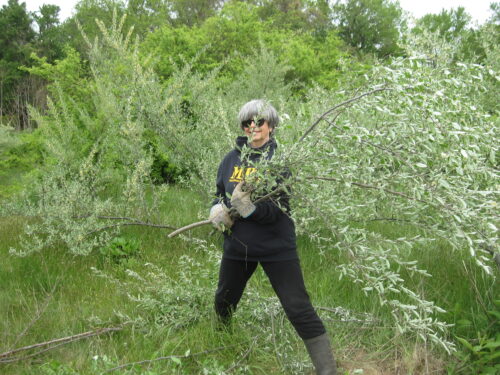 Autumn Olive branches cut from stems.
Autumn Olive branches cut from stems.
To debark autumn olive shrubs, begin any time of the year by removing side branches, using a limb saw.
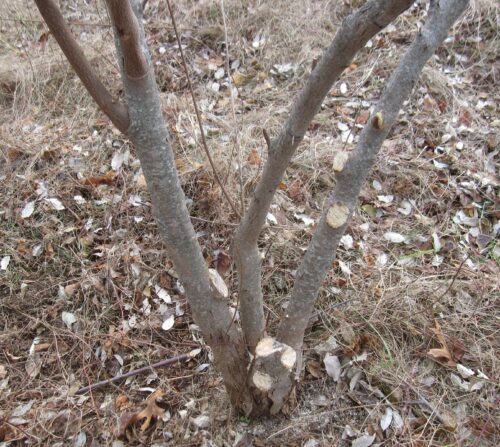 Stems and branches cut in December
Stems and branches cut in December
Because the winter is a good time to cut woodies, remove all but one or two large stems to allow the sap to flow in spring when they can be cut to about 18 inches above the ground. Then immediately debark stumps after the remaining stems leaf out up to just before flowering. Or harvest the edible ripe berries before debarking in early fall.
 Peeled Autumn Olive bark in spring
Peeled Autumn Olive bark in spring
Energy stored in the roots over the winter will feed the upper plants in spring to grow leaves and flowers. That’s the time to peel the outer bark down to the white, slimy inner hardwood as deep into the ground as possible.
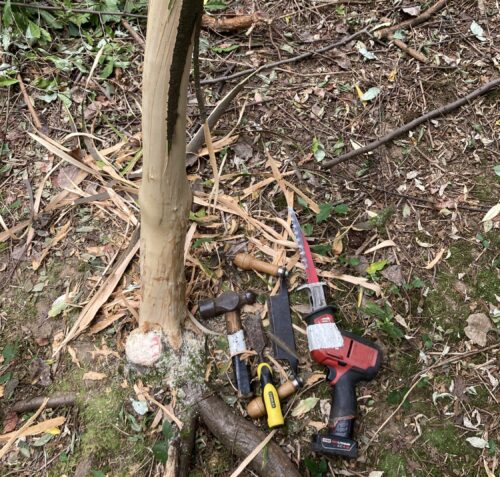 Reciprocating saw with pruning blade, 5″ draw knife, hammer & chisel
Reciprocating saw with pruning blade, 5″ draw knife, hammer & chisel
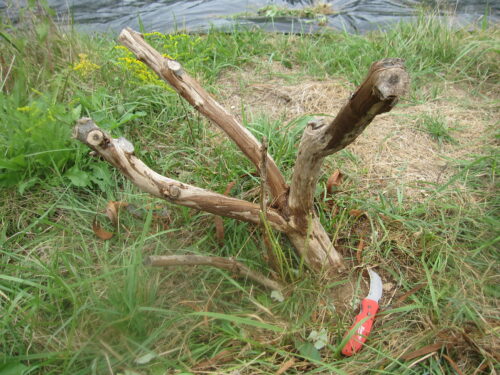 Hawk bill flip knife
Hawk bill flip knife
The best tools for debarking include: a potato peeler for very small plants; a 5″ draw knife, hammer with chisel; and a hawk bill flip knife for ripping off the outer bark and phloem (the inner layer of the bark) of the larger shrubs.
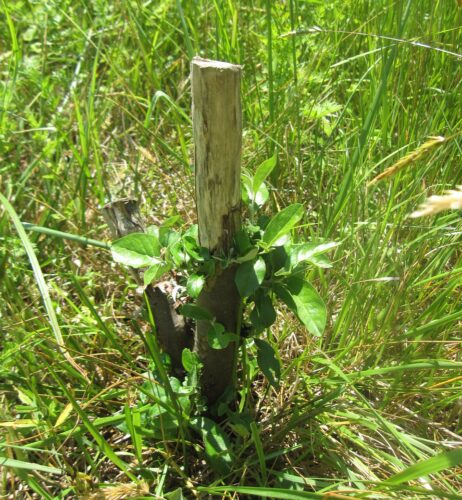 Suckers along lower stem
Suckers along lower stem
Snap off suckers growing on any missed spot.
 A patch of Autumn Olive debarked stumps
A patch of Autumn Olive debarked stumps
Once the stems are debarked and dying they may be cut down to stumps, but they should be checked every six months or so to remove any suckers that may appear at the base until the stumps die and easily break off.
